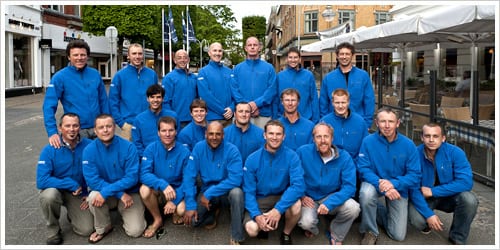 How do you keep the world’s second largest offshore wind farm – Denmark’s Horns Rev 2, owned by DONG Energy — operating at peak efficiency with a bare minimum number of breakdowns?
How do you keep the world’s second largest offshore wind farm – Denmark’s Horns Rev 2, owned by DONG Energy — operating at peak efficiency with a bare minimum number of breakdowns?
For starters, you’ll need some big boats: Horns Rev 2 sits about 18 miles off the west coast of Denmark in the North Sea. More important, you’ll need a highly specialized service operation — such as Reno, Nevada-based Ropeworks, which handles major infrastructure projects from bridges and dams to turbines — that can handle the extreme nature of this year-round gig.
The Equipment
Horns Rev 2 supports 91 giant wind turbines with total generating capacity of 209 megawatts, each towering 375 feet above sea level (and mounted 115 feet below). The entire service area covers over 14 square miles. Scaling each of these massive structures requires a team of 23 Ropeworks field techs — who double as free-climbers using ropes and harnesses to scale the massive towers and blades. While the turbine blades are designed to last 20 years, that only happens if service crews can keep up with all the service demands.
The Service
Part of Ropesworks’ routine is constant blade upkeep – in particular, upkeep prior to warranty expiration, after which repair costs jump significantly. The Ropeworks crew focuses on constant maintenance challenges such as leading edge erosion, moisture intrusion, cracks from temperature contraction and expansion, and lightning damage. Other tasks include:
- * Inspection and installation of lightning protection systems
- * Laminate and coating repair
- * Hairline cracks
- * Dent removal
- * Torque testing of landing bolts
The Crew

Ropeworks’ service team
The Ropeworks crew works at the site’s home-base platform, the Poseidon — first of its kind in the world — with 24 rooms, a gym, kitchen and dining room. That’s just one remote assignment for Ropeworks, of course: In addition to bridge inspections and wind-turbine repair, the team has also “designed rescue systems at Mt. Rushmore, managed geological mapping at Crazy Horse Memorial and also cleaned Seattle’s Space Needle.”

Share this: